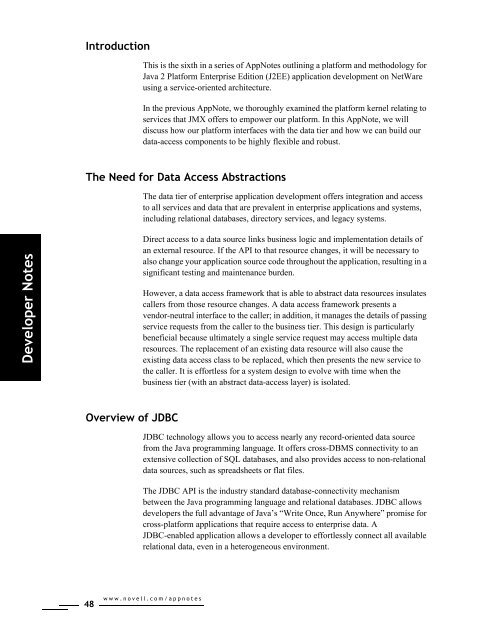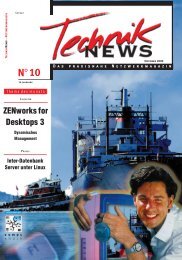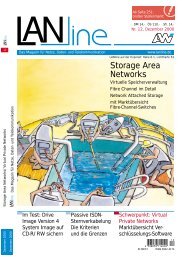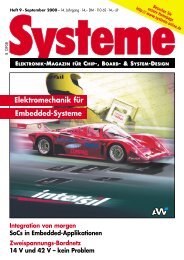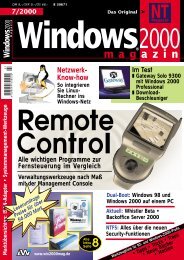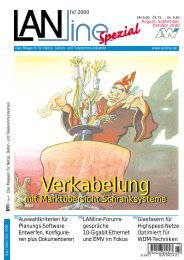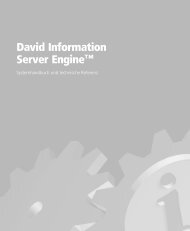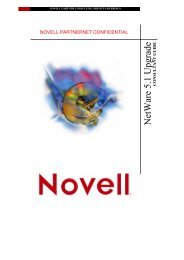Developer Notes - ITwelzel.biz
Developer Notes - ITwelzel.biz
Developer Notes - ITwelzel.biz
Create successful ePaper yourself
Turn your PDF publications into a flip-book with our unique Google optimized e-Paper software.
Introduction<br />
This is the sixth in a series of App<strong>Notes</strong> outlining a platform and methodology for<br />
Java 2 Platform Enterprise Edition (J2EE) application development on NetWare<br />
using a service-oriented architecture.<br />
In the previous AppNote, we thoroughly examined the platform kernel relating to<br />
services that JMX offers to empower our platform. In this AppNote, we will<br />
discuss how our platform interfaces with the data tier and how we can build our<br />
data-access components to be highly flexible and robust.<br />
The Need for Data Access Abstractions<br />
The data tier of enterprise application development offers integration and access<br />
to all services and data that are prevalent in enterprise applications and systems,<br />
including relational databases, directory services, and legacy systems.<br />
<strong>Developer</strong> <strong>Notes</strong><br />
Direct access to a data source links business logic and implementation details of<br />
an external resource. If the API to that resource changes, it will be necessary to<br />
also change your application source code throughout the application, resulting in a<br />
significant testing and maintenance burden.<br />
However, a data access framework that is able to abstract data resources insulates<br />
callers from those resource changes. A data access framework presents a<br />
vendor-neutral interface to the caller; in addition, it manages the details of passing<br />
service requests from the caller to the business tier. This design is particularly<br />
beneficial because ultimately a single service request may access multiple data<br />
resources. The replacement of an existing data resource will also cause the<br />
existing data access class to be replaced, which then presents the new service to<br />
the caller. It is effortless for a system design to evolve with time when the<br />
business tier (with an abstract data-access layer) is isolated.<br />
Overview of JDBC<br />
JDBC technology allows you to access nearly any record-oriented data source<br />
from the Java programming language. It offers cross-DBMS connectivity to an<br />
extensive collection of SQL databases, and also provides access to non-relational<br />
data sources, such as spreadsheets or flat files.<br />
The JDBC API is the industry standard database-connectivity mechanism<br />
between the Java programming language and relational databases. JDBC allows<br />
developers the full advantage of Java’s “Write Once, Run Anywhere” promise for<br />
cross-platform applications that require access to enterprise data. A<br />
JDBC-enabled application allows a developer to effortlessly connect all available<br />
relational data, even in a heterogeneous environment.<br />
48<br />
www.novell.com/appnotes


